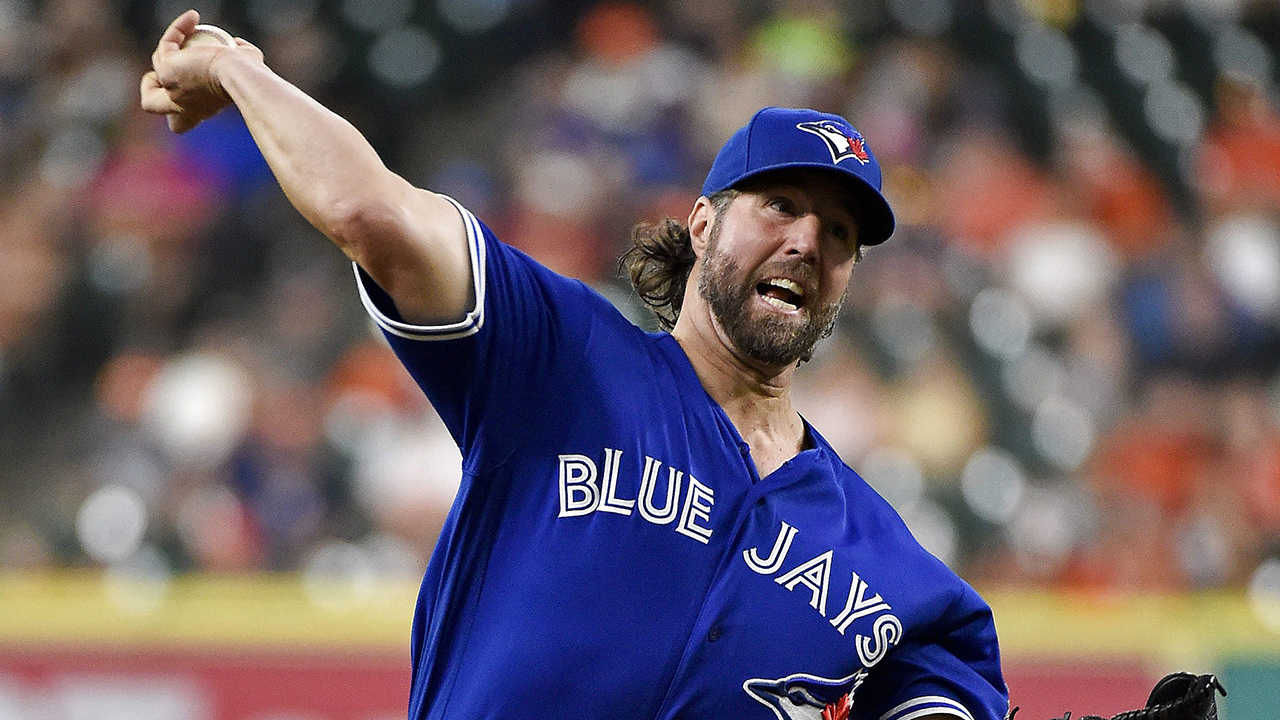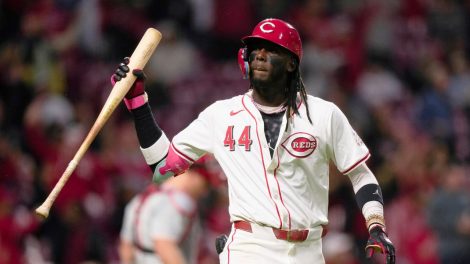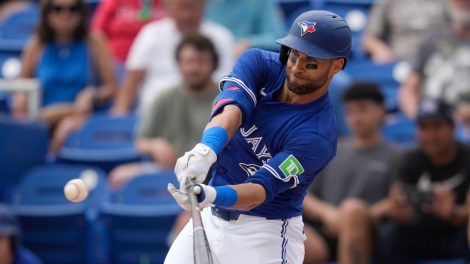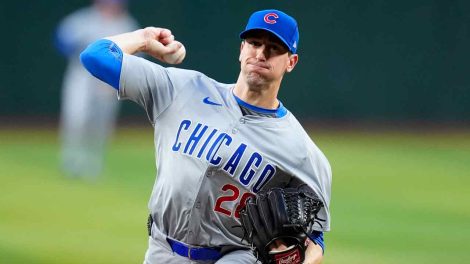R.A. Dickey once said that nobody ever really masters the knuckleball; that “you just kind of have a relationship with it.”
That statement is fitting for the knuckleballer’s Toronto Blue Jays career, which ended Thursday morning when the Atlanta Braves signed Dickey to a $7.5 million free-agent contract for 2017 with an $8 million club option in 2018 or a $500,000 buyout. Dickey leaves Toronto with a career earned run average of 4.05 in 131 games that is better than that of Pat Hentgen (4.28); Jim Clancy (4.10); and Juan Guzman (4.07); and the knowledge that in his final season, the team that acquired him as a cornerstone piece – at the cost of one of its best-ever pitching prospects – didn’t have a spot for him on its post-season roster.
As a relationship, this one was complicated. Trading for and living with Dickey was in many ways a rite of passage for an organization that stopped going to the post-season and a general manager – Alex Anthopoulos – who was trying to carve out a niche in the business. It was a hard lesson that there is no perfect existence in the Majors: you can’t simply stockpile prospects and hope they blossom at the same rate and same time. Once you decide to go all in, it makes no sense to leave a hole and absent overwhelming financial strength or a surplus of young, cost-effective Major Leaguers with four years of control remaining, you might have to sacrifice a prospect. Or two.
And that’s what Anthopoulos did after the 2012 season when he pulled off a massive eight-player deal with the Miami Marlins that brought in Jose Reyes, Josh Johnson and Mark Buehrle among others and decided to augment that transaction by adding Dickey, who was coming off a National League Cy Young season and at worst was a sure-fire 200 innings. The cost was Noah Syndergaard, now one of the dominant young arms in the game with the Mets, and catching prospect Travis d’Arnaud.
Baseball people were not unanimously in love with the deal. But they understood it. Detroit Tigers manager Jim Leyland saw Anthopoulos in spring training, walked over and said: “You have balls.”Anthopoulos’ predecessor, J.P. Ricciardi, had also made bold moves (albeit in the free agent market) without getting into the playoffs. He, too, understood. “We took our shot as an organization and, look, part of this job is timing,” Ricciardi said. “We took our shot when the Yankees and Red Sox were still dominant, and even our so-called big moves were just things that kept us stride for stride with those teams. That’s why I credit Alex for making those moves. I think the cycle’s in his favour.”
The Blue Jays did not win the World Series in Dickey’s four seasons here. Not only did he not make the post-season roster in 2016, but his appearances in 2015 were dodgy, including a 1 2/3-inning start in Game 4 of the American League Championship Series, a 14-2 loss to the Kansas City Royals.
But it’s not fair to view Dickey’s Blue Jays career entirely through that lens. It cannot be stressed enough how much his addition, plus willingness to sign a contract extension before throwing a first pitch here, was taken along with Anthopoulos’ myriad other moves as a sign that the Blue Jays were serious. The Blue Jays pushed product that winter, and climbed over two million in attendance once again after three years of less than two million; they haven’t looked back since.
Dickey didn’t play as big a role as Jose Bautista and Edwin Encarnacion in re-establishing the franchise as part of the country (let alone the city’s) sports consciousness, but his trick pitch and deeply-textured backstory and erudite nature made him a notable figure. Plus – and this must be noted – Syndergaard didn’t pitch in the Majors until 2015; he would not likely have helped the Blue Jays in 2013 or even the first half of 2014 and Anthopoulos wanted someone who could be a factor during the life of Encarnacion and Bautista’s contracts.
Dickey had baggage, namely his personal catcher (Josh Thole) whose one measurable ability – catching the knuckleball – and lack of even limited offensive capacity handcuffed the Blue Jays 25-man roster. Dickey was a bit of an odd bird, and not because he wrote (as well as read books) and dropped lines such as “capricious animal,” to describe his knuckler. Stationed in the corner of the clubhouse away from the other pitchers, he was at most a benign presence and manager John Gibbons simply didn’t trust him – or particularly his pitch – in big games.
Dickey wasn’t a pain in the ass to manage off the field; on it, he drove Gibbons and Toronto fans around the bend. Living and dying with Dickey as he fought control of his low-80s miles per hour slop wasn’t as sexy as watching somebody try to harness a 100 miles per hour fastball; but for the Blue Jays – and especially Alex Anthopoulos – it was a necessary complication. Just because a trade doesn’t work out, it doesn’t mean it wasn’t the right decision to make at the time.










